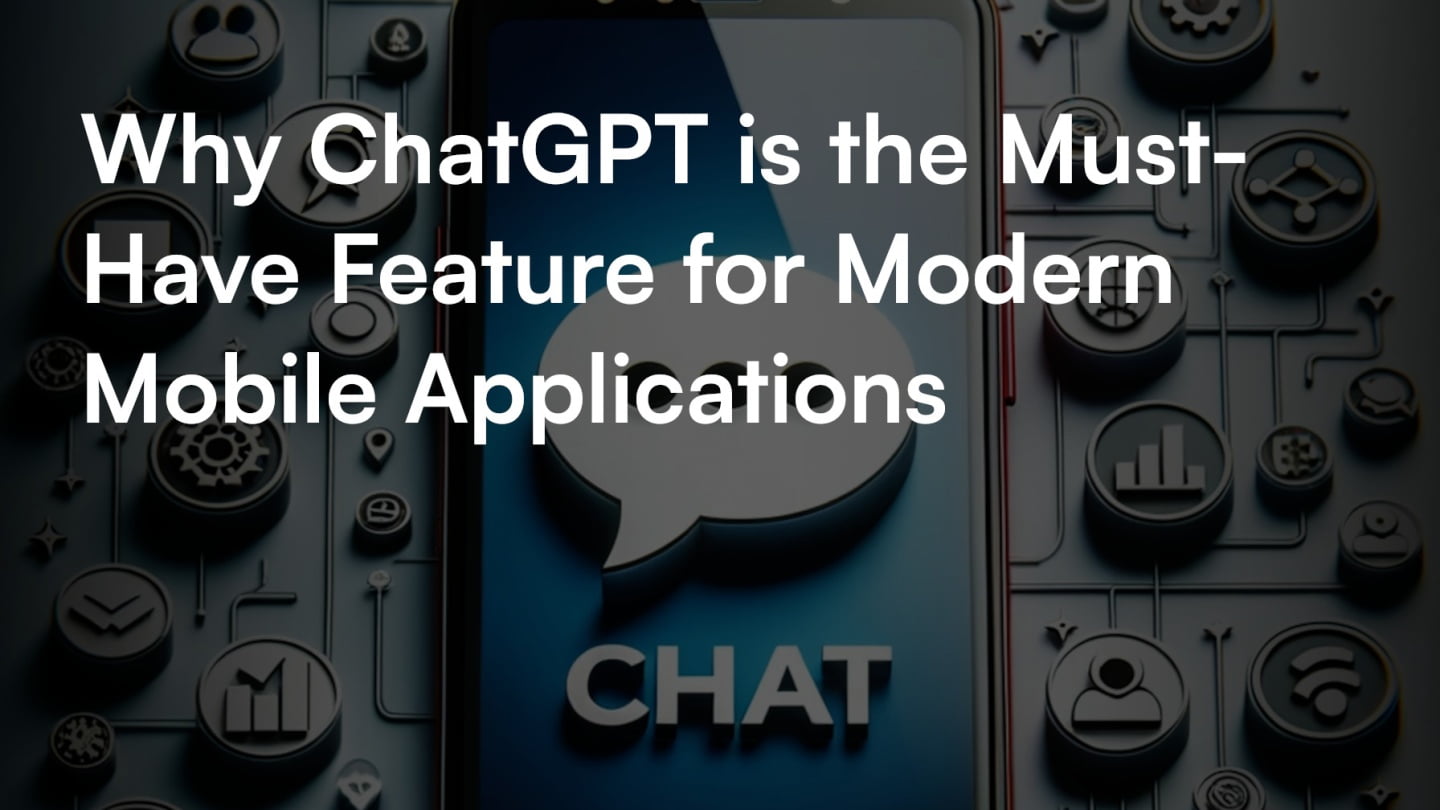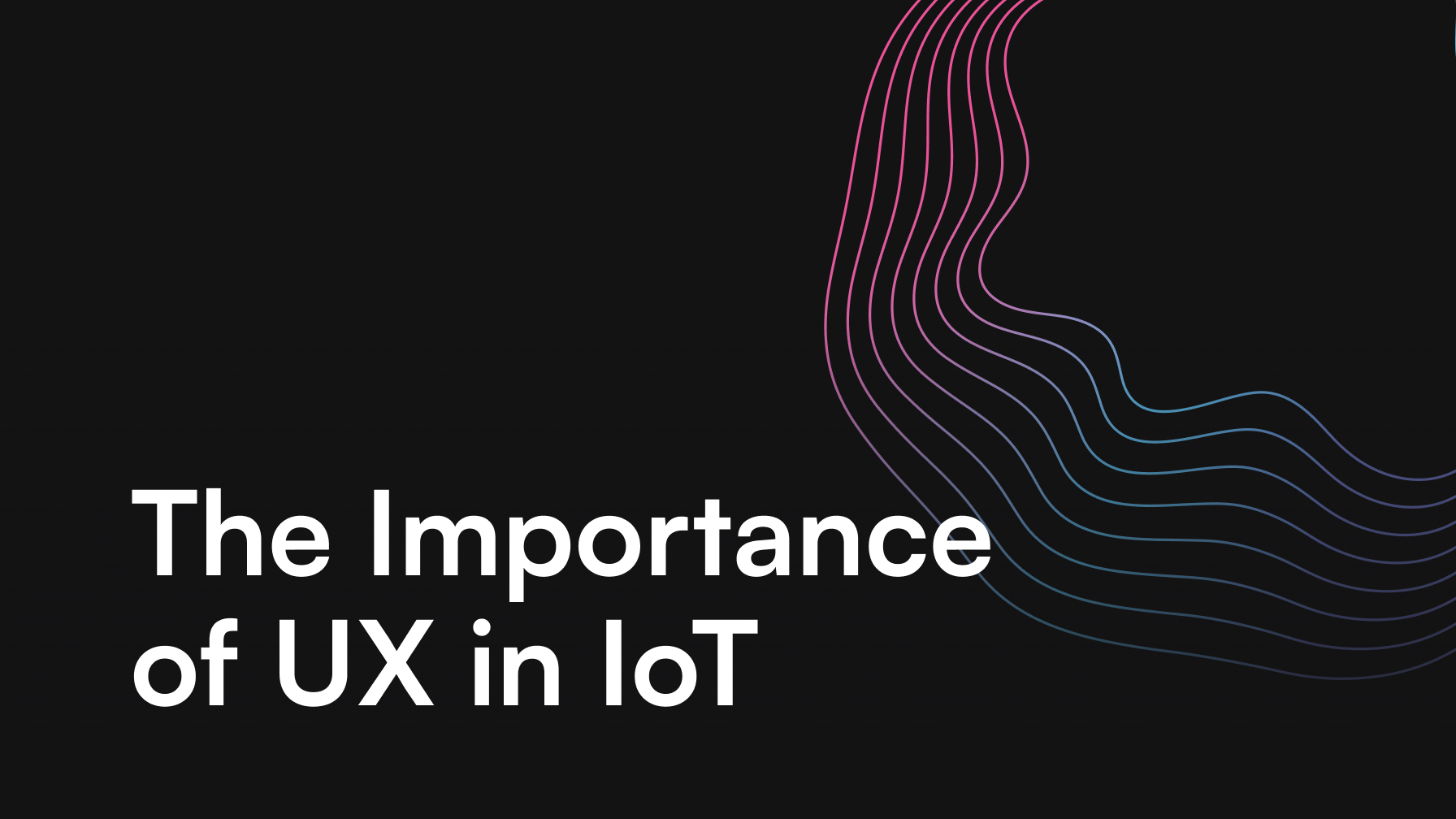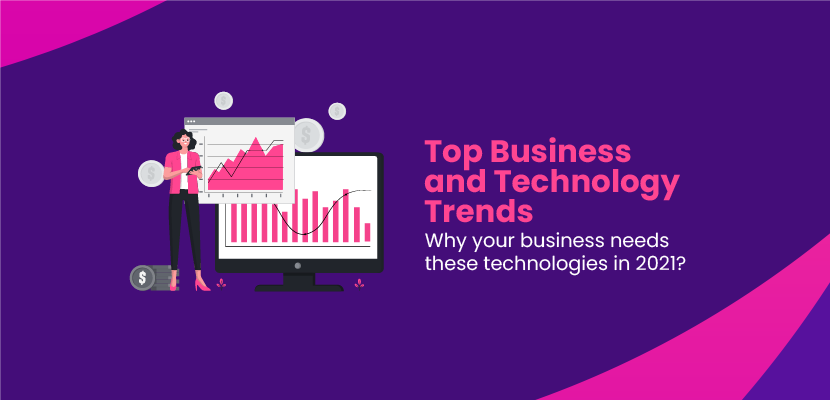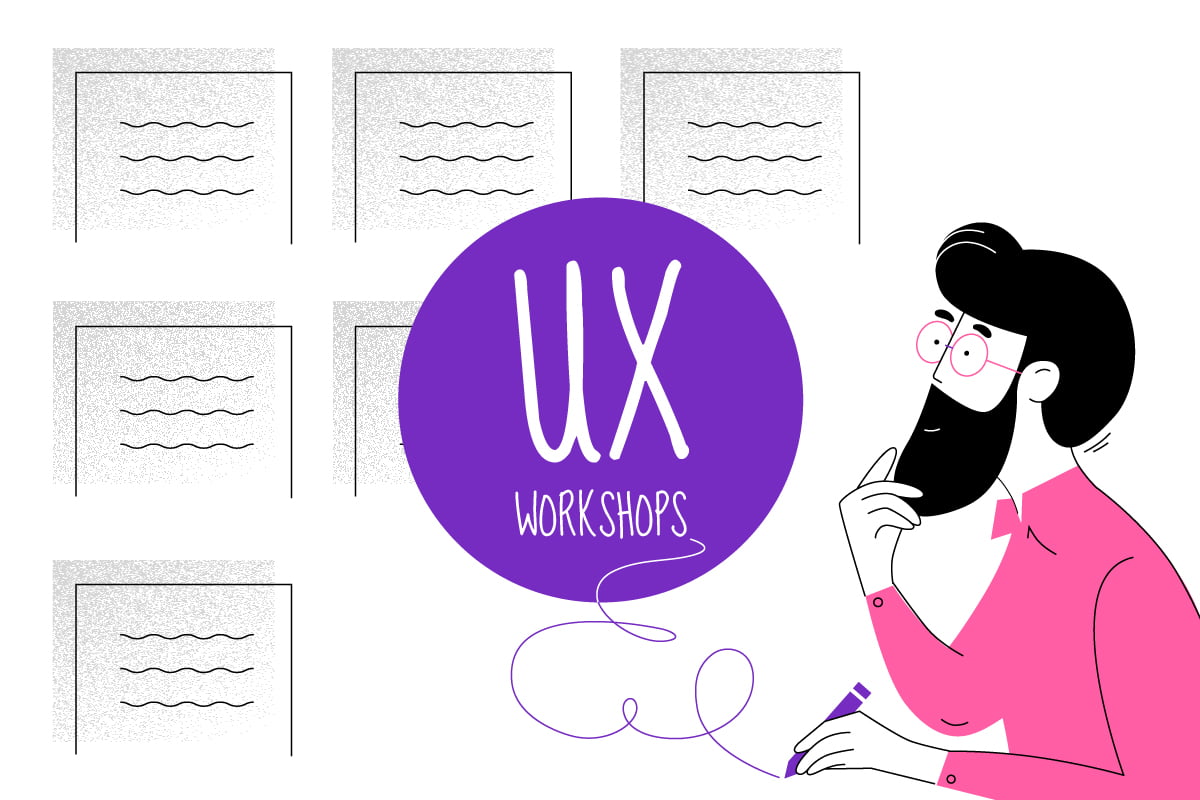Why ChatGPT is the Must-Have Feature for Modern Mobile Applications

Gareth Smith

While technology continues its rapid progression, the majority of companies use their web and mobile apps to engage their users, meet their clients’ demands as their online habits evolve, and make processes even more efficient. With the introduction to ChatGPT, we must consider how to leverage this AI generative tool in the app development industry to take our digital products to the next level. With ChatGPT gaining popularity, it is rapidly becoming a must-have in modern mobile applications. From revolutionizing user interactions to humanizing app experiences, this technology is reshaping the way users engage with their mobile apps. In this blog, we delve into the compelling reasons why integrating ChatGPT is not just a trend but a strategic imperative for businesses aiming to create unparalleled experiences in mobile app development. Let’s look at how artificial intelligence and ChatGPT is redefining the very fabric of the modern mobile app.

ChatGPT can boost your mobile app growth strategy
ChatGPT has emerged as a valuable tool to propel businesses towards enhanced mobile app engagement and accelerated user growth. Leveraging advanced natural language processing (NLP), ChatGPT crafts contextual conversations within the chatbot interface, delivering personalized experiences that resonate with users resulting in a cascade of personalized and meaningful experiences that not only foster deeper user engagement but an app using ChatGPT can elevate the likelihood of customer retention.
To this date, we have only scratched the surface of this AI model but going forward, the impact on your digital product can be profound, elevating user satisfaction, trimming customer service costs, and opening new avenues for sales. Moreover, ChatGPT equips developers with robust analytics, unravelling valuable insights into customer-chatbot interactions, and paving the way for continuous enhancement, making ChatGPT an indispensable asset for businesses striving to optimize their mobile app success.
In essence, ChatGPT transcends conventional boundaries, reshaping the landscape of mobile app growth with its prowess to generate text in personalized interactions, cost efficiency, and data-driven strategy refinement. Embrace ChatGPT, and unlock a new realm of possibilities for your mobile app’s journey to unparalleled success. But how can we leverage this technology and maximize the potential of an app using ChatGPT?
Integrating AI language model into mobile apps
Integrating ChatGPT into your mobile application is able to transform user interactions and enrich the overall app experience, as well as allowing you to gain valuable insights into user interactions with ChatGPT. Here are some ways to take advantage of the potential of ChatGPT:
Empower User Control
Provide users with a variety of interaction options, granting them the freedom to choose how they engage with the chatbot. This not only enhances user experience but also puts them in control of their conversational journey.
Harness NLP Technology
Leverage natural language processing (NLP) technology to facilitate smoother and more intuitive interactions. NLP enables the chatbot to understand and respond to text phrases in a meaningful way, contributing to a more user-friendly experience.
Feedback Mechanism
Implement a feedback system that allows users to share their thoughts after each interaction with ChatGPT. This valuable input helps in continuous refinement, improving the accuracy of responses over time and ensuring successful conversational experiences.
Seamless Integration
Enable ChatGPT to interact seamlessly with other applications and services within your mobile app. This integration not only streamlines the user experience but also allows users to access multiple services within a unified interface.
Continuous Monitoring and Analysis
Regularly monitor and analyse conversations between users and ChatGPT to identify areas for improvement. This proactive approach ensures that customers consistently enjoy positive interactions, fostering higher levels of loyalty and satisfaction.

According to Product Owners, ChatGPT is Reshaping the Mobile App Landscape
Since OpenAI made ChatGPT available to the public in 2020, we have been asking CTOs and Product Owners how they believe ChatGPT can give their digital products a strategic advantage. Here is a summary of the main points they have given. It should be noted that using ChatGPT in the app development process to build apps, assist developers, accelerate app development and writing codes has not been included. Some of the feedback given was gathered at the beginning of ChatGPT’s launch, so we have chosen not to share the names of the participants. However, it was clear that there was an appetite to leverage this technology and a belief that embracing ChatGPT would position enterprises at the forefront of innovation and user-centricity.
Enhanced User Engagement
One of the pivotal aspects that ChatGPT brings to the table is the ability to enhance user engagement in mobile applications. For Product Owners, this translates to a more interactive and dynamic user experience. By transforming traditional, command-based interactions into natural and conversational dialogues, ChatGPT makes the app more intuitive and user-friendly. For enterprises, this results in increased user satisfaction and loyalty, fostering a positive brand image.
Personalization and User-Centric Experiences
An app using ChatGPT can play a pivotal role in ushering in a new era of personalized user experiences. Product Owners can leverage the language model to gain insights into user behavior, preferences, and expectations. This wealth of information allows for the creation of tailor-made app experiences, providing content and interactions that resonate with individual users. In the competitive landscape of mobile apps, personalization becomes a key differentiator, setting enterprises apart and enhancing their relationships with users.
Real-Time Assistance and Dynamic Content Generation
The real-time nature of ChatGPT’s assistance becomes a game-changer for Product Owners. Whether it’s responding to user queries, generating dynamic content, or assisting in writing codes, the language model adds a layer of dynamism to mobile applications. This real-time assistance ensures that apps stay responsive and adaptive, meeting the evolving needs of users. For enterprises, this translates to apps that are not only feature-rich but also agile and responsive to market demands.
Revolutionizing User Interactions
In the quest for more intuitive and dynamic user experiences, ChatGPT takes center stage by steering away from traditional command-based inputs. The paradigm shift towards natural and dynamic conversational experiences is explored in-depth, unveiling how this transformative technology mirrors real-life dialogues within mobile applications.
Global Accessibility with Multiple Languages
Mobile app developers gain a global edge by harnessing the power of ChatGPT to infuse human-like text and conversational interfaces into Android apps. We explore how the language model’s proficiency in multiple languages broadens the reach of applications, making them more accessible on a global scale.
How could you integrate a Virtual Shopping Assistant into your current application using ChatGPT?
Let’s take one of a million ideas of integrating ChatGPT into an existing mobile app and consider how a virtual shopping assistant powered by ChatGPT could enhance your client’s user experience by offering a human-like, conversational experience that goes beyond traditional browsing and engagement but also contributes to increased customer satisfaction and loyalty. Here’s how ChatGPT could be effectively utilized in this context:
Product Recommendations
ChatGPT can be utilized to analyze user preferences, purchase history, and browsing behavior. This analysis would be the driver to provide personalized product recommendations based on the user’s profile and current shopping habits. The accuracy of suggestions can be enhanced by understanding natural language queries and refining recommendations in real-time and generating a higher opportunity of conversion.
Conversational Shopping Experience
A chat-based interface that allows users to interact with the virtual assistant and have contextual understanding in a conversational manner could be utilized to generate a unique shopping experience. Human-like text, generated by ChatGPT would enable users to ask questions about products, inquire about deals, or seek advice on purchasing decisions providing a more user-friendly online experience.
Guided Shopping Tours:
ChatGPT could also be used to guide users through virtual shopping tours, helping them explore different categories and find relevant items. To perform tasks similar to human assistants, ChatGPT can provide a seamless conversational flow completely free that mimics the in-store experience by offering information and suggestions using generative AI as the user navigates the mobile app.
Assistance in Decision-Making:
Assist users in making informed decisions by providing detailed information about products, including specifications, reviews, and comparisons. Use ChatGPT to answer queries about product features, compatibility, and availability.
Order Tracking and Customer Support:
Implement order tracking functionalities through the virtual assistant, allowing users to inquire about the status of their orders. Provide customer support by addressing queries related to shipping, returns, and other post-purchase concerns.
Personalized Promotions and Offers:
Tailor promotions and special offers based on the user’s preferences and interactions. Use ChatGPT to communicate these promotions in a conversational manner, increasing engagement and encouraging users to take advantage of deals.
Natural Language Input:
Enable users to communicate with the virtual assistant using natural language input. Implement features that understand and interpret complex queries, ensuring a seamless and intuitive interaction.
Feedback and Improvement:
Use ChatGPT to gather user feedback on the shopping assistant’s performance. Analyze user interactions to continuously improve the virtual assistant’s capabilities and enhance the overall user experience.
Cross-Selling and Upselling:
Leverage ChatGPT language models to suggest complementary products or upsell higher-value items based on the user’s preferences and shopping history.
Integration with Visual Search:
Integrate ChatGPT language models with visual search functionalities to allow users to upload images and receive recommendations based on visual cues.

Using Generative AI in mobile apps
Businesses now have the unprecedented capability to harness the power of artificial intelligence for dynamic and personalised user experiences. Generative AI empowers mobile apps to understand user preferences, generate contextually relevant content, and provide intelligent solutions, making the user interaction more natural and engaging. This shift marks not just an evolution but a leap forward, where the fusion of mobile app development with generative AI language models s poised to redefine the standards of user-friendly, intelligent, and cutting-edge applications in the digital realm. As generative AI becomes more mainstream and accessible, its integration into mobile apps stands as a testament to the ongoing journey of technology shaping the future of user-centric digital experiences.
12 Ideas for Using ChatGPT in mobile apps
We can see ChatGPT being used to do repetitive tasks, compose music, generate instant responses and even write codes. However, here are 12 ideas
1. Smart Content Suggestions:
Idea: Use generative AI to analyze user preferences, behaviors, and past interactions to suggest personalized content, products, or services.
2. Automated AI Chatbot with Natural Language Processing (NLP):
Idea: Integrate an AI chatbot powered by generative AI and NLP to provide instant and natural responses to user queries, improving customer support and engagement. Chatbot development is on the rise in customer service.
3. Personalized Recommendations:
Idea: Leverage generative AI to analyze user preferences, purchase history, and browsing behavior to offer highly personalized product or content recommendations.
4. AI-Powered Virtual Shopping Assistant:
Idea: Implement an AI-driven virtual shopping assistant that helps users find products, provides information, and offers suggestions based on user input and preferences.
5. Dynamic Content Generation:
Idea: Use generative AI to dynamically generate content, such as articles, news, or tips, tailored to individual users’ interests and preferences.
6. Enhanced Photo Filters and Editing:
Idea: Incorporate generative AI for advanced photo filters and editing tools that can intelligently enhance images, add effects, or suggest improvements based on user preferences.
7. Voice-Based Interaction:
Idea: Integrate voice-activated features powered by generative AI, allowing users to interact with the app through natural language commands and receive personalised responses.
8. Auto-Generated Captions and Descriptions:
Idea: Utilize generative AI to automatically generate captions for images, videos, or user-generated content, improving accessibility and user engagement.
9. AI-Enhanced Augmented Reality (AR):
Idea: Combine generative AI with AR to offer immersive and personalised experiences, such as virtual try-ons for fashion items or augmented reality games.
10. Smart Notification Content:
Idea: Use generative AI to analyze user behavior and preferences to send targeted and personalized notifications, ensuring relevant content reaches users at the right time.
11. Intelligent Auto-Completion:
Idea: Implement an intelligent auto-completion feature using generative AI for search queries, making it faster and easier for users to find what they’re looking for.
12. AI-Generated User Surveys:
Idea: Use generative AI to create dynamic and personalised user surveys that adapt based on user responses, providing valuable insights while keeping the user experience engaging.
By integrating these generative AI-powered features, you can not only enhance user satisfaction but also stay at the forefront of technological innovation in the mobile app space.

What’s the difference between NLP and Generative AI?
Generative AI and Natural Language Processing (NLP) are related concepts but refer to different aspects of artificial intelligence, particularly in the context of language understanding and generation. While NLP focuses on the understanding and analysis of language, generative AI is concerned with the creation of new content, often leveraging the patterns and context learned from extensive datasets during training.
Natural Language Processing (NLP)
Definition: NLP is a field of artificial intelligence that focuses on the interaction between computers and human languages. It involves the development of algorithms and models that enable computers to understand, interpret, and generate human language.
Tasks: NLP encompasses a range of tasks, including text parsing, sentiment analysis, language translation, named entity recognition, and text summarization. These tasks involve understanding the structure and meaning of language at various levels.
Generative AI
Definition: Generative AI refers to models and systems that have the capability to generate new content, such as text, images, or other forms of data. These models are trained on large datasets and can create novel outputs based on the patterns and structures learned during training.
Tasks: In the context of language, generative AI models can be used to generate coherent and contextually relevant text. Examples include language models like OpenAI’s GPT (Generative Pre-trained Transformer) series, which can generate human-like text based on a given prompt or context.
Key Differences
NLP focuses on the understanding and processing of human language. It involves tasks related to comprehension, analysis, and interpretation of text.
Generative AI focuses on the generation of new content. It involves creating novel outputs, such as text, based on patterns learned from existing data.
Applications
NLP is used in a variety of applications, including chatbots, language translation, sentiment analysis, and information extraction.
Generative AI is applied to tasks where creative generation is required, such as text generation, image synthesis, and content creation.
Training Data
NLP is trained on labelled datasets for supervised learning and often requires annotated data for specific tasks.
Generative AI is trained on large datasets without explicit labels. Models learn patterns, context, and structure from the data.
Examples
NLP examples include Named Entity Recognition (NER), sentiment analysis, machine translation.
Generative AI examples include GPT-3 for text generation, DALL-E for image generation.
Should you integrate ChtGPT with your existing mobile apps
Salesforce, Microsoft and SnapChat have all used ChatGPT to add value to their existing user base by finding solutions to user problems. While we have provided some examples of how ChatGPT can create value in apps hypothetically, the ultimate question is should you integrate ChatGPT within your current digital products and development process. The answer lies in your business analysis.
Conduct Business Analysis
When deciding whether to integrate ChatGPT into your app, the approach is similar to adding any other new feature. Business analysis activities can help assess the feasibility, impact, and alignment with business objectives. Here are some essential activities to consider:
- Market Research
Understand the current market trends and user preferences. Identify if there’s a demand for the proposed feature and if competitors have already implemented similar features.
- User Surveys and Feedback
Collect user feedback through surveys, reviews, and direct communication. Determine if the feature is something users have requested or would find valuable.
- Competitor Analysis
Analyse what features your competitors are offering. Assess whether the proposed feature can provide a competitive advantage.
- Business Goals and Objectives
Ensure that the feature aligns with the broader business goals and strategic objectives of the organisation. The feature should contribute to achieving these goals.
- Cost-Benefit Analysis
Calculate the potential costs and benefits of adding the feature. Consider development costs, expected revenue increase, user retention, and other relevant metrics.
If you need help with your business analysis, contact itCraft to explore a business ideation workshop and you can draw on our 13 years’ experience to steer you in the right direction.
Prepare documentation and UX/UI designs
- User Personas and User Stories
Develop user personas representing different segments of your user base. Create user stories that outline how these personas would benefit from the new feature.
- Create Mockups and a Prototype
Create prototypes or mockups of the new feature to visualise its functionality and design. This helps stakeholders better understand the feature’s potential.
- Technical Assessment
Assess the technical feasibility of implementing the feature. Consider factors like compatibility with existing systems, development resources, and any potential technical challenges.
If you need expertise from a business analyst, UX/UI designer or an expert IT architect, contact us here and we will help assess your needs.
Use ChatGPT’s API to implement your new feature
- Get the API key
To make use of the ChatGPT API, you will need to sign up and get an API key through the OpenAI website.
- Choose your preferred programming language
OpenAI provides the ChatGPT API, SDKs and libraries in a number of programming languages, including Java, JavaScript and Python.
- Install the SDK
After choosing your preferred programming language, the next step is to install the SDK or library for the chosen language.
- Create a new instance of the API
After installing the SDK, you will need to create a new instance of the API. To do this, provide your API key and any other necessary configuration options.
- Make requests to the API
Use your API key to make HTTP POST requests to the API endpoint, passing in the appropriate input data in the request.
- Process the response
Once you receive a response from the API, you can extract the generated text from the response and display it in your application.
The app development process to make the necessary changes to your mobile app can be very complex and challenging. If you do not currently have a team with expertise in mobile app development to implement new features into your app, please let us know how we can help. We have over a decade of expertise in developing mobile apps and managing the entire app process.
Conclusion
In conclusion, the integration of ChatGPT into your existing mobile applications represents a transformative leap in enhancing user experiences and staying at the forefront of technological innovation. As technology continues to advance, mobile apps serve as a cornerstone for engaging users, meeting evolving demands, and streamlining processes. ChatGPT, with its capacity for natural language understanding and generation, offers a strategic imperative for businesses looking to provide unparalleled digital experiences.
From revolutionizing user interactions to personalizing content and offering real-time assistance, ChatGPT is reshaping the way users engage with mobile apps. The AI model’s potential to elevate user engagement, retention, and overall satisfaction is undeniable. By embracing ChatGPT, you open the door to a new realm of possibilities for your mobile app’s journey to unparalleled success.
Integrating ChatGPT into your mobile application empowers your users with unique features and personalization. Whether you’re enhancing user control, harnessing natural language processing, enabling seamless integration, or continuously monitoring interactions, ChatGPT provides a wealth of opportunities to redefine the mobile app landscape.
As showcased by industry giants like Salesforce, Microsoft, and Snapchat, ChatGPT has proven its value in real-world applications. It’s not merely a trend but a strategic asset that can boost user engagement, streamline processes, and unlock new avenues for sales. To decide whether ChatGPT integration is right for your app, conducting thorough business analysis, preparing comprehensive documentation, and leveraging ChatGPT’s API to implement the new feature are essential steps.
Ultimately, ChatGPT transcends traditional boundaries, reshaping the landscape of mobile app growth with its prowess in generating text, fostering cost savings, creating product descriptions and refining strategies through data-driven insights. Embrace ChatGPT, and step into a future where technology and user-centricity converge to redefine the standards of digital experiences. The decision to integrate ChatGPT into your mobile app can be a game-changer, and with the right team and approach, it can lead to transformative success in the ever-evolving world of mobile applications.
itCraft has been involved in application development since 2010 and has been leveraging modern technology in app development ever since. We have been using ChatGPT since the availability of its basic version, and have now integrated ChatGPT into commercially available mobile applications. We are dedicated to the ethical use of artificial intelligence and are constantly looking at how the next AI tool can help our clients achieve their business goals.






